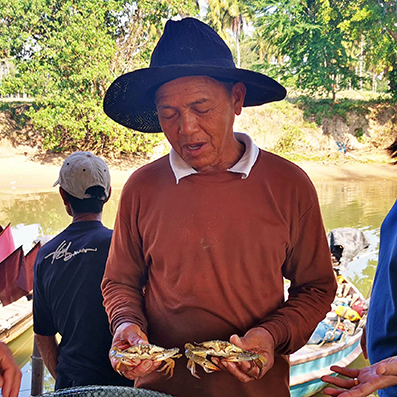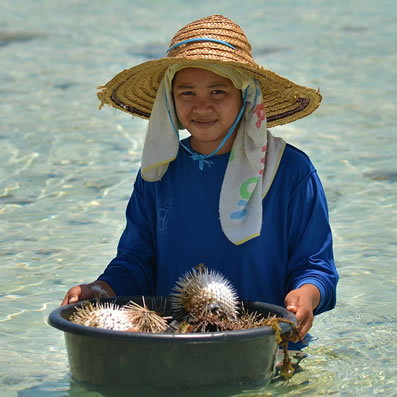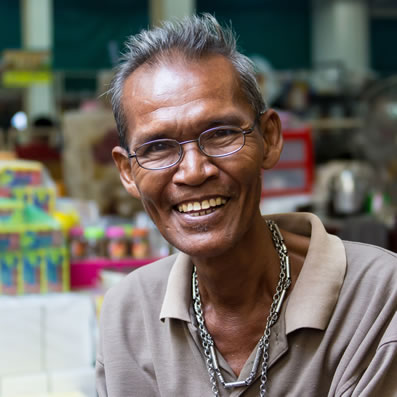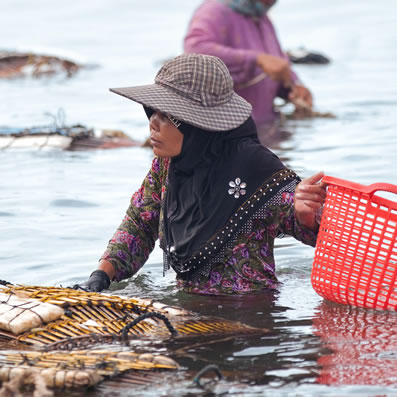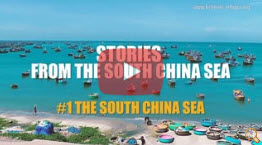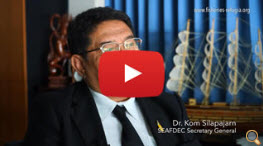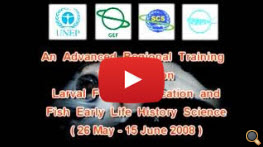THE SOUTH CHINA SEA FISHERIES REFUGIA INITIATIVE
FISHERIES REFUGIA PROJECT SITES
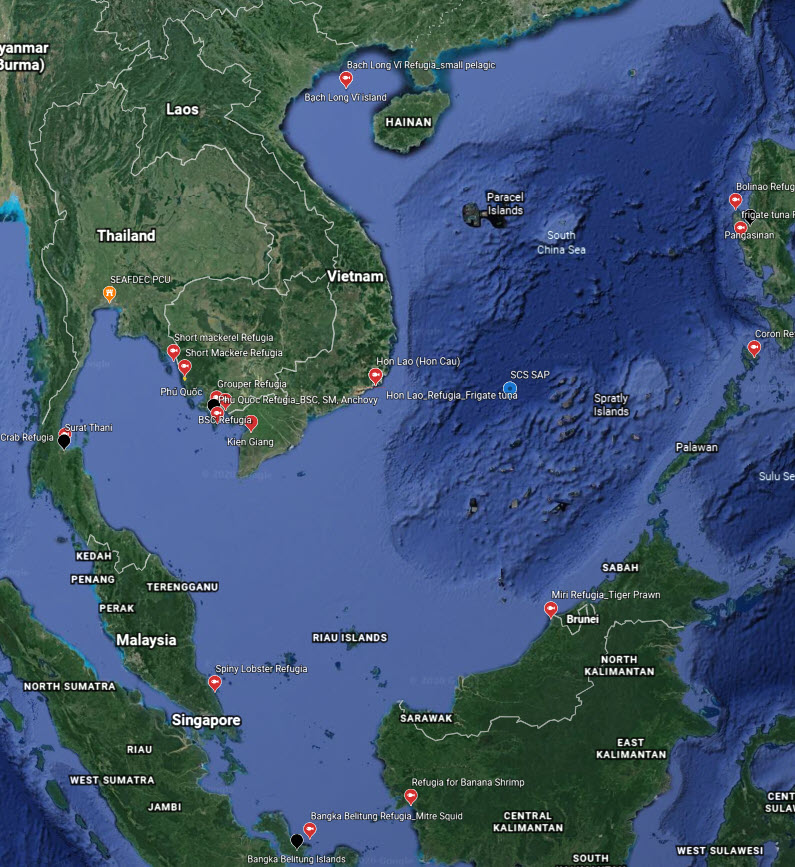 Click Here for
Click Here for More
Information
SCS SAP PRIORITY SITES (Habitat Linkages)
 All SCS SAP and
All SCS SAP and Fisheries Refugia
Priority Sites CHINA HABITAT
SITES CAMBODIA HABITAT
SITES INDONESIA HABITAT
SITES PHILIPPINES HABITAT
SITES THAILAND HABITAT
SITES VIET NAM HABITAT
SITES
Meet our Stakeholders
Social Media
Social Media
Southeast Asia: Fish Bank of the World
GEF-UNEP/SEAFDEC Fisheries Refugia Project
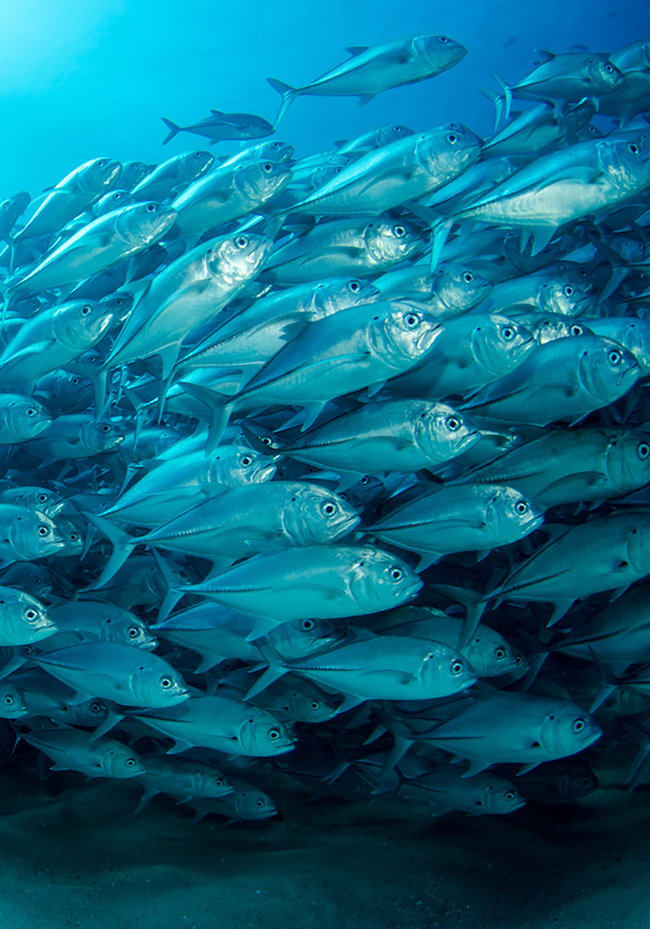
Photo: Credit to EARTH.COM (Rory Arnold).
The Southeast Asian region is bounded by two oceans between Indian Ocean on the west and the Pacific and also is located by major rivers, lakes, and seas where created the region’s aquatic ecosystems diversity and supply direct and indirect food of the world. The Southeast Asian region has been playing significant role in providing fish and fishery products to the global food fish supply. In the State of World Fisheries and Aquaculture 2020 (SOFIA 2020), FAO estimated that the global fishery production in 2018 was about 179 million tonnes (t) valued at USD 401 billion. Of this total, the Southeast Asian region contributed 46.53 million t or approximately 26.0%, valued at USD 51.80 billion or approximately 13% of the total value of the global fishery production. Based SEAFDEC Fishery Statistical Bulletin 2018 (SEAFDEC, 2020), fisheries production of Southeast Asia comes from three sub-sectors: marine capture fisheries, inland capture fisheries, and aquaculture. While aquaculture contributed about 54.0% of the region’s total fisheries production in terms of quantity in 2018, marine capture fisheries accounted for 39.0% and inland capture fisheries at 7.0%. In terms of value about 38.0% was contributed by aquaculture, 54.0% by marine capture fisheries, and 8.0 % by inland capture fisheries (Table 1). The tuna groups have been the most economically important marine species in terms of production value, and ranked the highest in value accounting for about 14.57% of the total production value in 2018
Table 1 Fisheries productions of the Southeast Asia (by sub-sector): Quantity (Q) in million metric tons and Value (V) in billion US$

Data supplied by the Fishery Statistical Bulletin of Southeast Asia 2018. Credit SEAFDEC 2020
Addressing global commitments and the Sustainable Development Goals
Recognizing of the impacts of rapid industrialization, tourism development and urbanization that led to damage on fisheries and aquatic habitats and to the life cycles of aquatic organisms threatening their sustainability and the livelihoods of millions of people dependent on these resources. It has therefore become necessary for countries in the Southeast Asian region to exert efforts in maintaining the habitats that are critical for aquatic species during their life cycles in conjunction with restoration plans to ensure the sustainability of these aquatic ecosystems and resources.
Taking into consideration the need for maintaining and restoring the habitats critical for aquatic species in the Southeast Asian region, SEAFDEC has been working towards integrated, holistic, and science-based management approaches that are participatory and transparent to support the commitment of the Southeast Asian countries in achieving the UN Sustainable Development Goal 14 (SDG14). Recently ASEAN-SEAFDEC adopted the Resolution and Plan of Action on Sustainable Fisheries for Food Security for the ASEAN Region Towards 2030. Furthermore, along the line with the concept of fisheries refugia, SEAFDEC also supports the implementation of the global and region policy guided for the States to manage resources by taking into account the target and non-target stocks and species interactions, as well as the relevant environmental and economic factors
Promotion of the fisheries refugia concept and SCS SAP implementation
The South China Sea and the Gulf of Thailand are the center of shallow water for tropical marine biodiversity, which support significant fisheries that are important for food security and income generation of several countries in Southeast Asia. In order to ensure the sustainable contribution of fisheries from the South China Sea and Gulf of Thailand areas to food security, SEAFDEC in partnership with the United Nations Environment Programme (UNEP) with funding support from the Global Environmental Facility (GEF) has been implementing the project “Establishment and Operation of a Regional System of Fisheries Refugia in the South China Sea and Gulf of Thailand” and the “UNEP GEF Implementing the Strategic Action Programme for the South China Sea and Gulf of Thailand (SCS SAP).” These two projects are supplementary and support management approach that focuses on essential links between fish stocks and their habitats and environment. Such approach offers a powerful intervention to improve livelihoods, food security and the marine environment in productive coastal fisheries.
The concept of fisheries refugia is being promoted by SEAFDEC with support from UNEP/GEF. Fisheries refugia is defined as “spatially and geographically defined, marine or coastal areas in which specific management measures are applied to sustain important species or fisheries resources during critical stages of their life cycle, for their sustainable use.” Therefore, fisheries refugia should not be simply considered as “no take zones” or “Marine Protected Areas” commonly found in fisheries management, but should be developed and implemented in a more comprehensive approach to management measures with the objective of ensuring the sustainable use for the resources for the benefit of present and future generations. Applying the concept of fisheries refugia also requires the involvement and awareness of fishing communities of what they are doing and why they are doing it; while the concept also seeks to align itself with the key areas of the SDG and the Aichi Targets contributing to the food security in the South China Sea and Gulf of Thailand areas, and to the overall enhancement of biodiversity and ecosystem services in these areas. By supporting the actions that have benefits for fish stocks and habitats at both the local and South China Sea basin level, more than 270 million lives dependent on the resources of these remarkable bodies of water can look forward to having a viable and sustainable future ahead
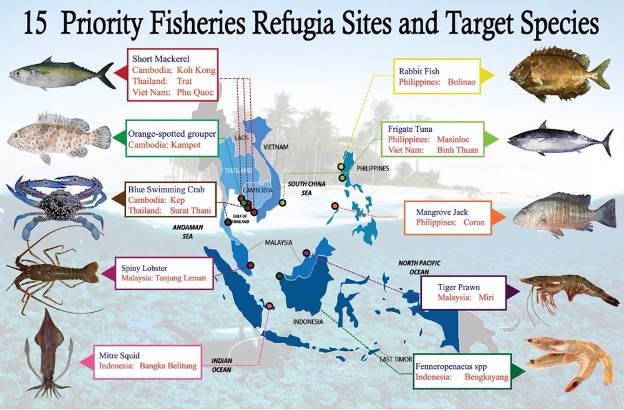
Priority Fisheries Refugia Sites identified under the Project “Establishment and Operation of a Regional System of Fisheries Refugia in the South China Sea and Gulf of Thailand”. Photo credit: SEAFDEC, 2020
About the GEF-UNEP Fisheries Refugia Project
The "Establishment and Operation of a Regional System of Fisheries Refugia in the South China Sea and Gulf of Thailand" project is funded by the GEF, implemented by UNEP, and executed by SEAFDEC.
The project objective is to operate and expand the network of fisheries refugia in the South China Sea and Gulf of Thailand for the improved management of fisheries and critical marine habitats linkages in order to achieve the medium and longer-term goals of the fisheries component of the Strategic Action Programme for the South China Sea.
For more information kindly contact the Project Manager, Somboon Siriraksophon ( somboon@seafdec.org ), and visit the project website plus the dedicated project page on iwlearn.net.
References
FAO. 2020. The State of World Fisheries and Aquaculture 2020. Sustainability in action. Rome. https://doi.org/10.4060/ca9229en
SEAFDEC. 2020. Fishery Statistical Bulletin of Southeast Asia 2018. Southeast Asian Fisheries Development Center, Bangkok, Thailand http://repository.seafdec.org/handle/20.500.12066/6601
SEAFDEC, 2020. Resolution and Plan of Action on Sustainable Fisheries for Food Security for the ASEAN Region Towards 2030. Southeast Asian Fisheries Development Center, Bangkok, Thailand; 23 pp. http://repository.seafdec.org/handle/20.500.12066/6583
